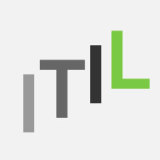PMI-ACP Tools and Techniques: Value Based Prioritization

[PMI-ACP® Exam Study Notes] Agile Value Based Prioritization is one of the ten Tools and Techniques for the PMI-ACP® exam. The “Tools and Techniques” accounts for a total of 50% of all the questions to be found on the exam paper. According to the PMI-ACP® exam content outline, Value Based Prioritization includes return on investment (ROI) / net present value (NPV) / internal rate of return (IRR), Compliance, customer-valued prioritization, minimally marketable feature (MMF) and relative prioritization / ranking.
PMI-ACP® Exam Importance: around 3-6 questions (~5% of all questions)
Article Highlights
PMI-ACP® Tools and Techniques: Value Based Prioritization
- Prioritization is to organize things so that the most important ones are to be dealt with first
- Value-driven delivery is an overarching principle for Agile projects. Projects are carried out to realize values (e.g. economic benefits, competitive advantages, reducing risks, regulatory compliance, etc.)
- In terms of Agile project management (and the PMI-ACP® exam), prioritization is the process where customers organize / select product backlog / user stories for implementation based on the perceived values
- ROI / NPV / IRR
- return on investment (ROI) / net present value (NPV) / internal rate of return (IRR) are tools to assist prioritization based on monetary values
- return on investment (ROI) – the values a project realized (using present value) compared to the investment; a positive ROI means the project is profitable
- net present value (NPV) – the net future cash flow (profit – expenditure) in terms of today’s value (adjusted for future inflation, etc.); a positive NPV means the project is profitable
- internal rate of return (IRR) – this is somewhat like the interest rate of the investment; the higher the positive IRR, the more profitable the project
-
IRR is the discount rate “at which the project inflows (revenues) and project outflows (costs) are equal”
- these calculations are performed during the selecting / justifying projects, the best projects are the ones with the largest ROI / highest NPV / highest IRR
- Compliance
- conforming to a rule, such as a specification, policy, standard or law (e.g. regulatory compliance)
- compliance usually requires documentation, which is somewhat against the principles of agile (working software over documentation)
- a balance has to be struck (maybe with the help of Agile compliance management systems)
- Customer-valued Prioritization
- deliver the highest value to the customers as early as possible
- the backlog should be customer-valued prioritized while taking into accounts technical feasibilities, risks, dependencies, etc.
- can win customer support
- value prioritization schemes
- simple schemes – rank from high to low (priority 1, 2, 3, …)
- MoSCoW prioritization scheme – Must have, Should have, Could have, Would like to have, in future
- Monopoly money – ask customers to give out (fake) money to individual business features in order to compare the relative priority
- 100-Point method – customers are allowed to give, in total 100 points, to various features
- Dot voting / Multi-voting – everyone is given a limited number of dots (~20% of the number of all options) to vote on the options
- Kano analysis – plot the features on a graph with axes as Need Fulfilled / Not fulfilled vs Satisfied / Dissatisfied, each feature will then be classified as “exciters, satisfiers, dissatisfiers, indifferent”. Exciters are of highest values.
- Requirements Prioritization model – rate each feature by benefits for having, penalty for not having, cost of producing, risks, etc. and calculate a score using a pre-defined weighted formula
- CARVER (Criticality, Accessibility, Return, Vulnerability, Effect, and Recognizability) relative to the objective and mission of the project
- Criticality – how important to be done upfront
- Accessibility – can work on it immediately? or depends on other work / skills?
- Return – ROI / NPV / IRR
- Vulnerability – how easy to achieve the desired results?
- Effect – what are the effects on the project (help moving towards the goal of the project)?
- Recognizability – have the goals been clearly identified?
- Relative Prioritization / Ranking
- an ordered list of all user stories / features to be completed with 1 being the highest priority
- when new features are to be added, it has to be compare, in terms of priority, to all current features
- the schemes list above can be used to assist the relative prioritization / ranking tasks
- Minimally Marketable Features (MMF)
- the minimal functionality set (a group of user stories or a package of features) that can deliver values (e.g. useful) to the customers / end-users
- a distinct and deliverable feature of the system
- provide significant values to the customer (can be sold / used immediately)
- chosen for implementation after value based prioritization
- can reap return on investment instantly
- most suitable for software projects
- the minimal functionality set (a group of user stories or a package of features) that can deliver values (e.g. useful) to the customers / end-users
Summary: Value Based Prioritization
This PMI-ACP® Exam Study notes touches upon one of the many tools and techniques of the PMI-ACP® exam syllabus – Agile Value Based Prioritization. Value Based Prioritization includes return on investment (ROI) / net present value (NPV) / internal rate of return (IRR), Compliance, customer-valued prioritization, minimally marketable feature (MMF) and relative prioritization / ranking.
Most Popular PMI-ACP Certification Articles
- Top 10 Tips to Prepare for the exam (I got all Proficient in my exam)
- How to Get 21 Contact Hours?
- Over 600+ FREE Quality Mock Exam / Practice Questions





 Hi, my name is Edward Chung, PMP, PMI-ACP®, ITIL® Foundation. Like most of us, I am a working professional pursuing career advancements through Certifications. As I am having a full-time job and a family with 3 kids, I need to pursue professional certifications in the most effective way (i.e. with the least amount of time). I share my exam tips here in the hope of helping fellow Certification aspirants!
Hi, my name is Edward Chung, PMP, PMI-ACP®, ITIL® Foundation. Like most of us, I am a working professional pursuing career advancements through Certifications. As I am having a full-time job and a family with 3 kids, I need to pursue professional certifications in the most effective way (i.e. with the least amount of time). I share my exam tips here in the hope of helping fellow Certification aspirants!





